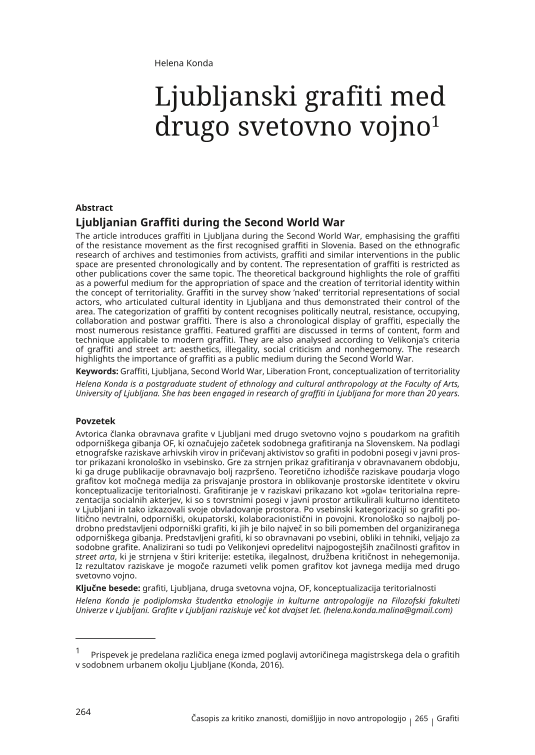The article introduces graffiti in Ljubljana during the Second World War, emphasising the graffiti of the resistance movement as the first recognised graffiti in Slovenia. Based on the ethnografic research of archives and testimonies from activists, graffiti and similar interventions in the public space are presented chronologically and by content. The representation of graffiti is restricted as other publications cover the same topic. The theoretical background highlights the role of graffiti as a powerful medium for the appropriation of space and the creation of territorial identity within the concept of territoriality. Graffiti in the survey show ’naked’ territorial representations of social actors, who articulated cultural identity in Ljubljana and thus demonstrated their control of the area. The categorization of graffiti by content recognises politically neutral, resistance, occupying, collaboration and postwar graffiti. There is also a chronological display of graffiti, especially the most numerous resistance graffiti. Featured graffiti are discussed in terms of content, form and technique applicable to modern graffiti. They are also analysed according to Velikonja's criteria of graffiti and street art: aesthetics, illegality, social criticism and nonhegemony. The research highlights the importance of graffiti as a public medium during the Second World War.




